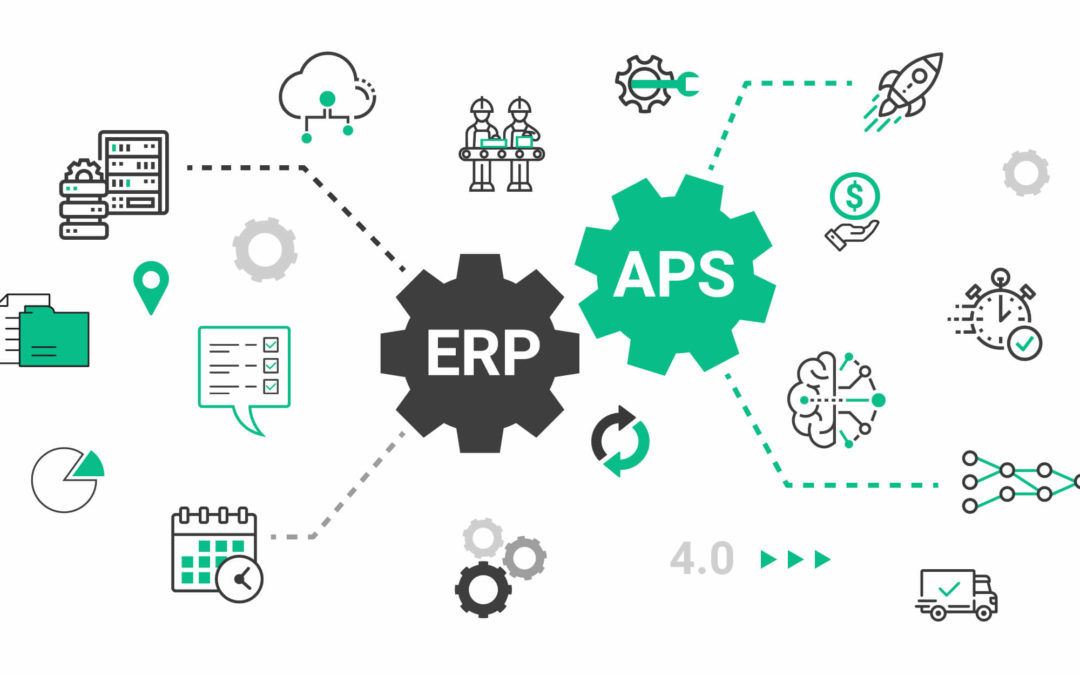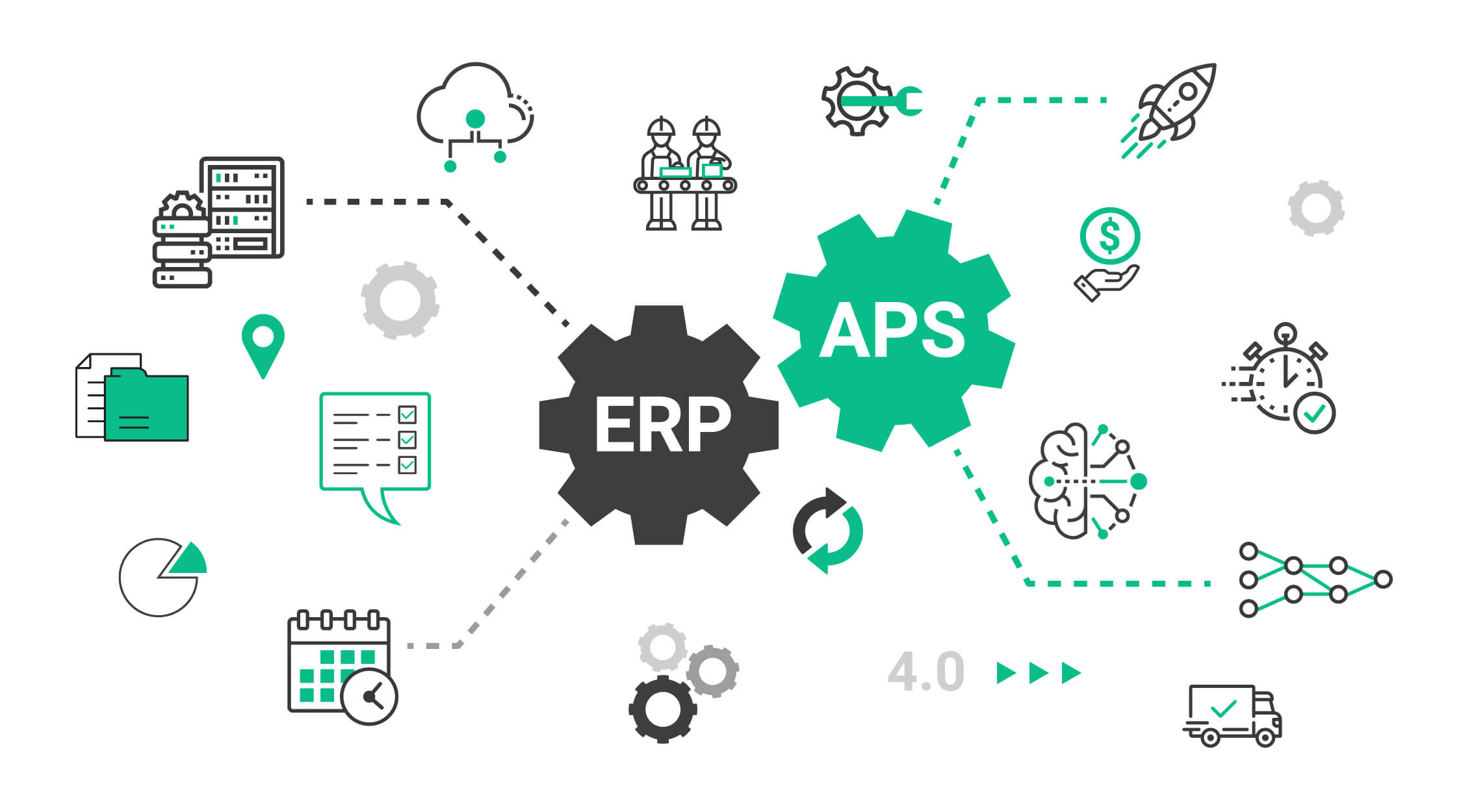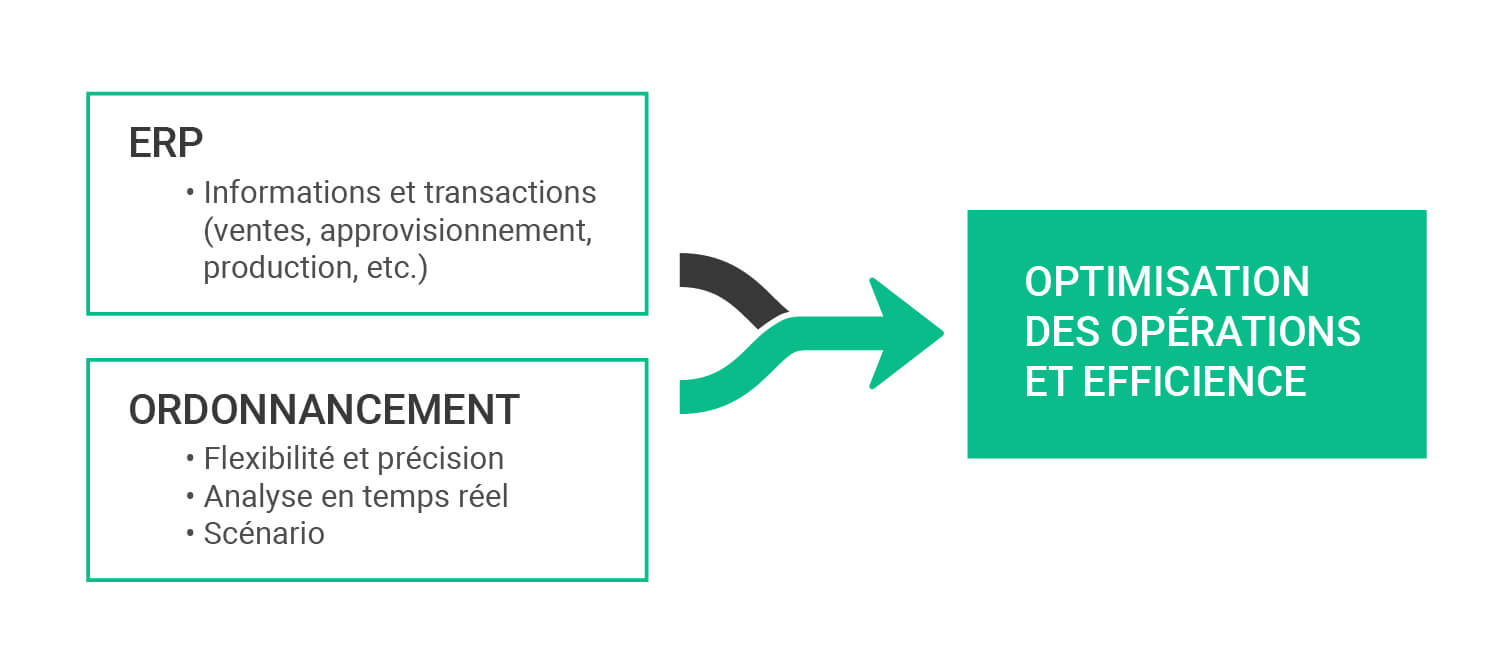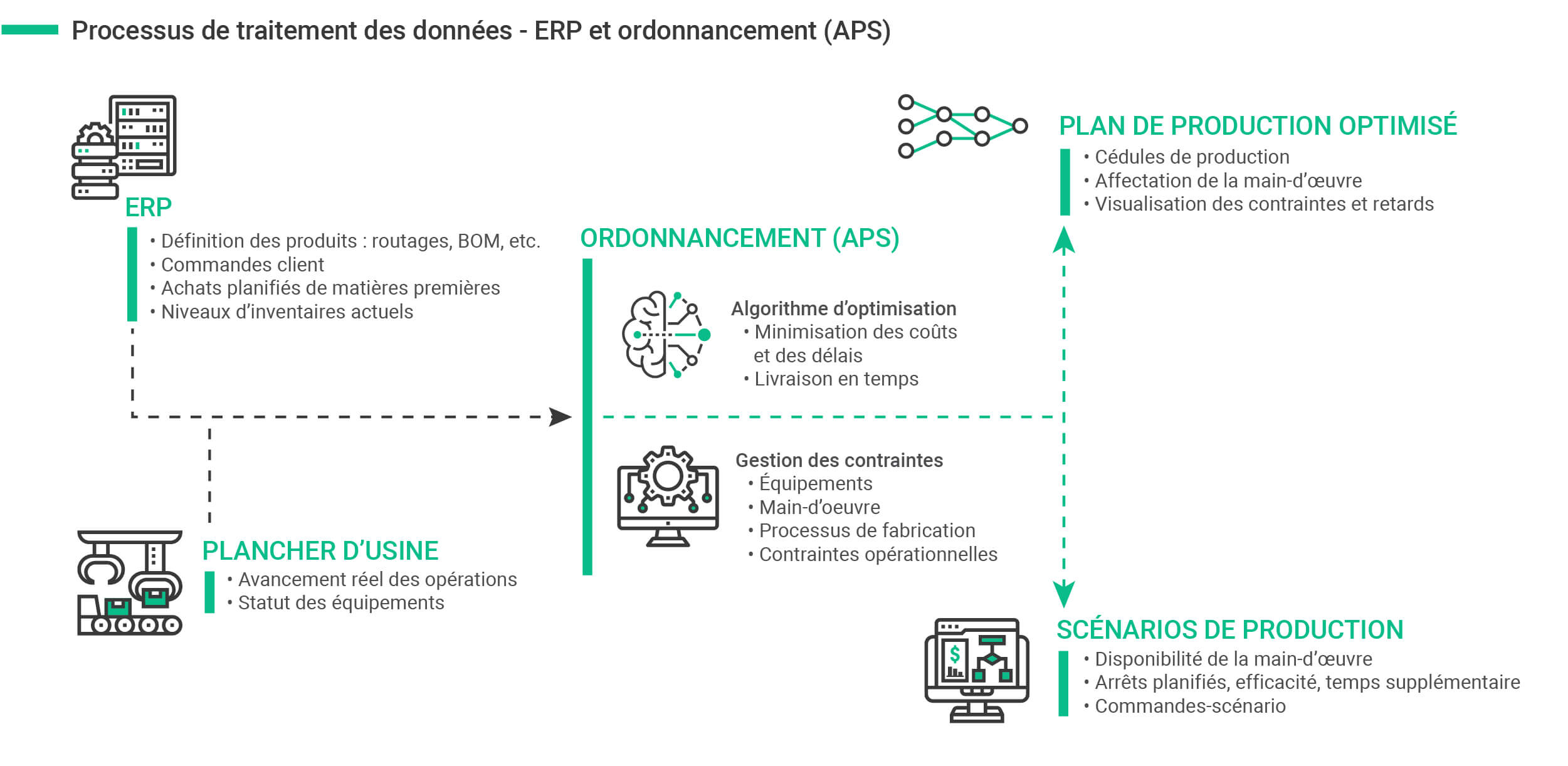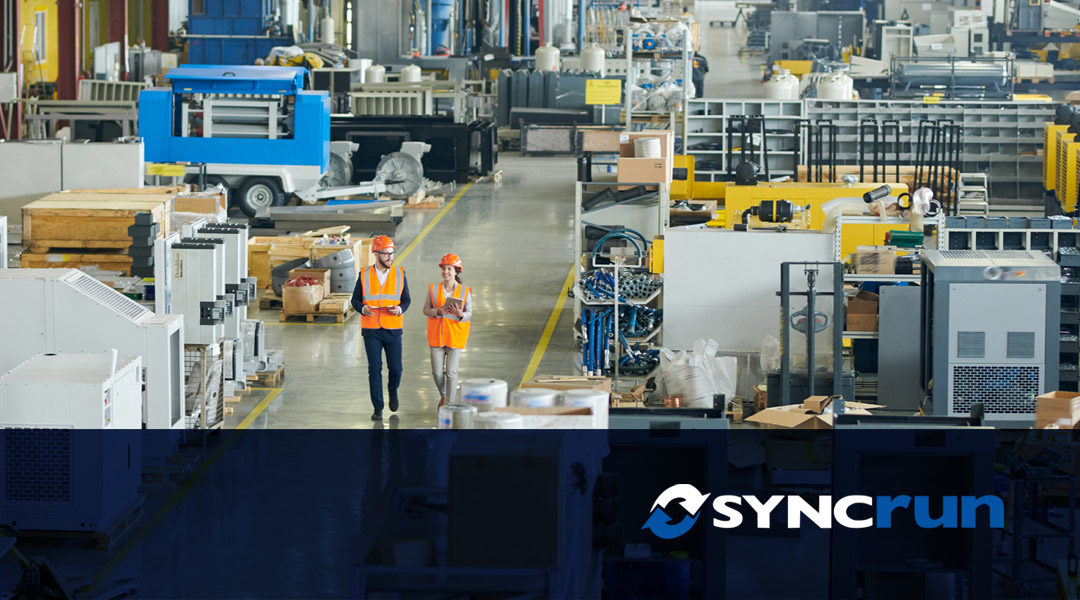Syncrun can solve 7 common production problems:
- Loss of control due to rapid growth
- Complexity of the planning and scheduling process
- Bottlenecks at certain production stages
- Trouble with on-time delivery—production time is too long
- Manpower shortages
- Trouble with coordination of raw material purchases
- Inability to assess different scenarios and measure their impacts
1. Loss of control due to rapid growth
Production often has trouble keeping up when a business starts growing faster. Orders pile up, production capacity is exceeded, and production times grow longer. Each new order becomes harder to manage, and stress increases on work teams.
Production capacity
To solve production capacity problems, you have to use your resources more efficiently. Syncrun’s advanced scheduling engine will optimize use of your equipment and manpower in a flash. It will synchronize your operations to free up more production capacity and provide an optimal schedule both cost-wise and time-wise.
Keeping track and keeping control
By planning and scheduling production with Syncrun, you can respond to changes while keeping production under control.
Syncrun has the advantage of anticipating potential problems at the planning stage. It also keeps all of your ongoing production in line with the actual situation on the shop floor and with unforeseen events of all sorts. Using it helps you keep track of things and make informed decisions.
2. Complexity of the planning and scheduling process
Planners have to deal with a multitude of tasks and constraints that complicate efforts to draw up an optimal and workable production plan.
Figuring things out by hand has its limits. Just think: to schedule several production orders, you have to sort through billions of possible sequences.
Fortunately, Syncrun’s advanced algorithm can analyze all the combinations of scenarios while taking all the constraints into accountenant—in just a few seconds! No more racking your brain over Excel spreadsheets. Syncrun is a simple, effective tool for multi-constraint optimization.
3. Bottlenecks at certain production stages
Bottlenecks affect how well your operations will proceed. Managing them is a recurring challenge for businesses. It may be hard, in advance, to find the best way to avoid or eliminate them while making sure the problem isn’t shoved elsewhere.
Syncrun will optimize your production schedule with a view to mminimizing the time you lose waiting for a machine to become available and then getting it ready. So less time is wasted, more production capacity is freed up, and production flow is improved.
Furthermore, Syncrun can show you how the production line is progressing and identify at a glance any bottlenecks that threaten on-time delivery. You can then analyze different scenarios and change your plan accordingly.
4. Trouble with on-time delivery—production time is too long
Just-in-time delivery has become key for businesses that wish to stay competitive in the market and satisfy increasingly demanding customers.
Different factors may cause problems:
- Miscellaneous, customized products that slow down production
- Promises of fast delivery that are difficult to keep
- Equipment failure
- Resource shortages
- Etc.
That’s why Syncrun optimizes operations in line with delivery times and different constraints. The reality on the shop floor is taken into consideration, and you can easily adjust your plan for unforeseen events such as rush orders or equipment failures. With Syncrun, you can base your decisions on a reliable plan and feel confident when promising delivery dates!
5. Manpower shortages
When you don’t have enough workers, you will have trouble delivering the goods on time and may even lose orders to competitors. So you should use available human resources to their full potential.
Syncrun optimizes use of your workers not only in terms of their availabilities but also in terms of their skills. Tasks are assigned to the most qualified people.
And that’s not all. Syncrun optimizes the way your workers are used on the shop floor to avoid downtime and minimize the impact of bottlenecks. By planning with Syncrun you can better identify your manpower needs.
6. Trouble with coordination of raw material purchases
What’s the impact of a rush order on all of your production? Will hiring an employee help you deliver on time? Will adding a new machine improve productivity? It’s often difficult if not impossible to assess the real impact of a decision or an unforeseen event.
Using data from your systems, Syncrun will generate a detailed production plan for all of your resources. The plan is adjusted to reflect movements of inventory as well as aavailability of raw materials and semi-finished products. It also takes anticipated deliveries of raw materials into consideration and forecasts your purchasing needs in relation to accurate scheduling of your operations.
7. Inability to assess different scenarios and measure their impacts
What’s the impact of a rush order on all of your production? Will hiring an employee help you deliver on time? Will adding a new machine improve productivity? It’s often difficult if not impossible to assess the real impact of a decision or an unforeseen event.
Syncrun enables you to measure the effects of a hypothetical order on all of your production through a simulation. You can vary resource availability, change efficiencies, or simulate an equipment failure. Syncrun will then show you the impact on production costs and delivery times.
